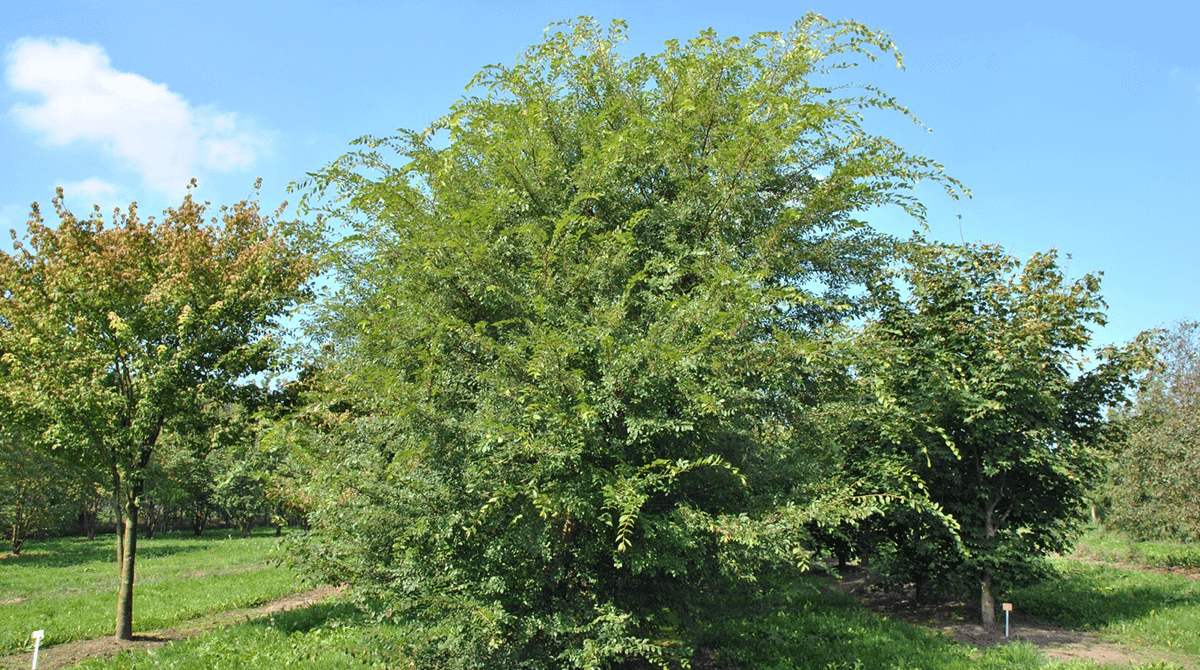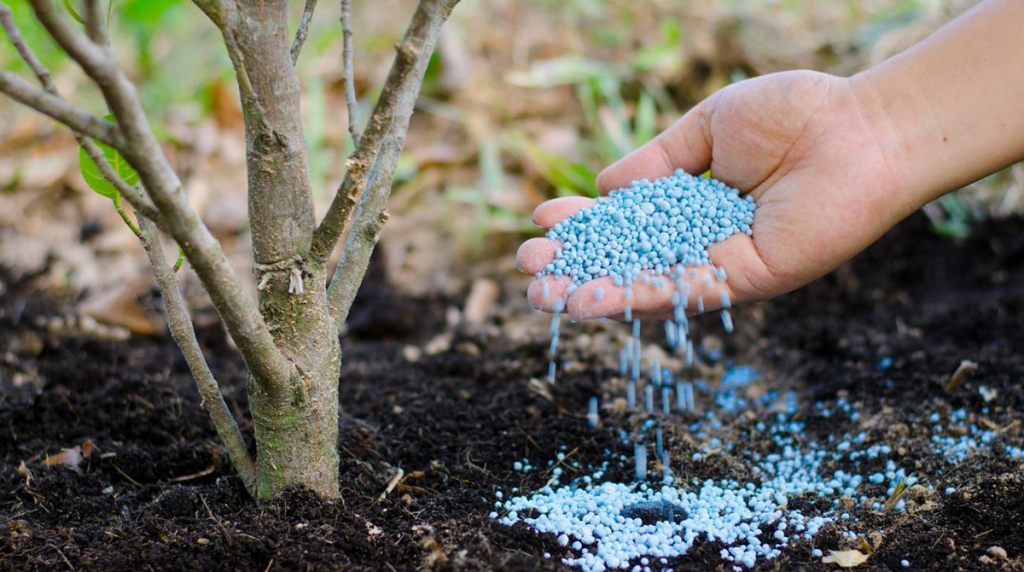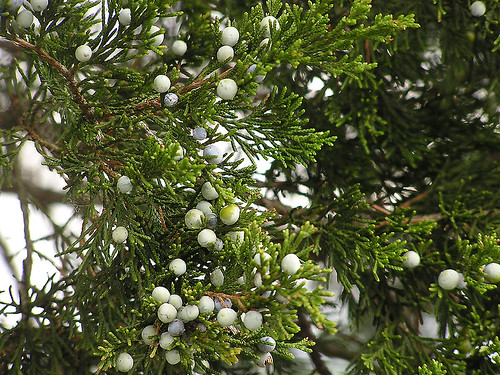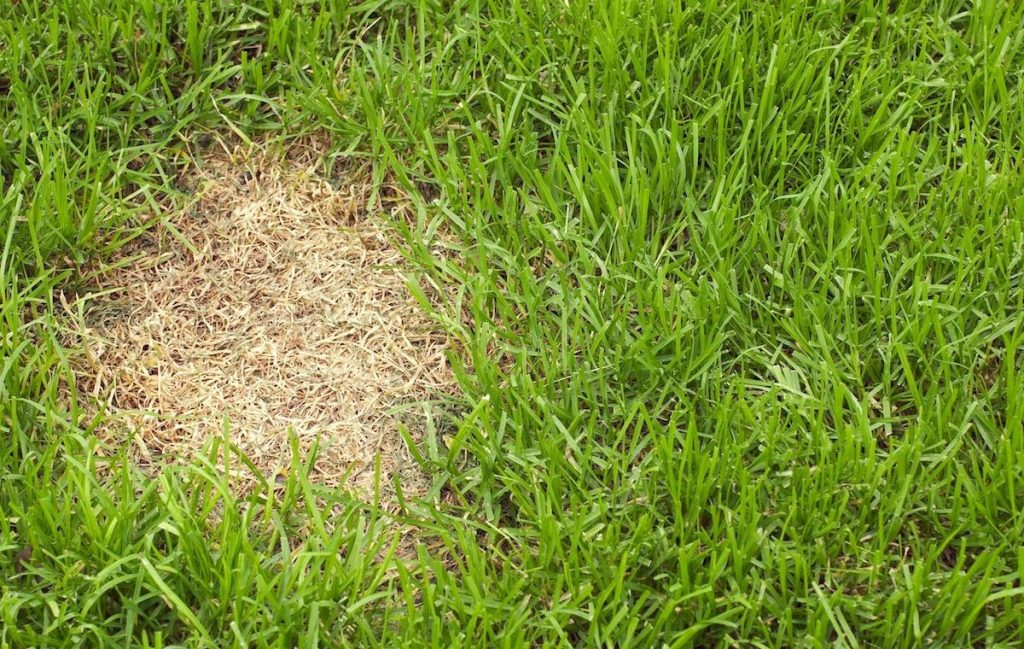
Why Is My Lacebark Elm Tree Dying?
Date March 22, 2021
Category
If you have a Lacebark Elm tree, you probably treasure it for its easygoing nature. These hardy trees, which are also called Chinese Elms, tolerate a wide range of site conditions. They thrive in North Texas because they tolerate drought and alkaline soils. You probably enjoy its elegant vase-shaped crown and small oval-shaped leaves that turn gold in the fall, but what about when your beloved Lacebark Elm isn’t looking so beautiful and healthy anymore? If your tree shows concerning signs, you might have a sick or dying tree on your hands. Here are some things to know if you think there’s an Elm tree dying on your property.
A little about Lacebark Elm trees
Let’s start with some good news about Lacebark Elm trees. Elm trees, or more specifically American Elms, were once prevalent throughout the United States and Southern Canada. In the early 1900s, a virulent strain of Dutch Elm Disease arrived on our shores and devastated our Elm population. By 1989, the disease had killed more than 75 percent of the Elms in North America, and it had also wreaked havoc on the Elm population in Europe. That’s the bad news. The good news is that the Elm population in the United States is on the rise again, largely thanks to cultivars resistant to Dutch Elm Disease. Lacebark Elm, a Eurasian-American Elm hybrid, is one of those cultivars. However, just because your Lacebark Elm tree is unlikely to contract Dutch Elm Disease doesn’t make it invincible. Every tree has weaknesses, including the Lacebark Elm. Below are some of the most common issues associated with Lacebark Elms and the most likely culprits if your tree appears to be suffering.
Elm Yellows (elm phloem necrosis)
Some Lacebark Elms are moderately resistant to a disease commonly called Elm Yellows, but others are not, and experts still don’t fully understand why. This disease is carried by leafhoppers and possibly other piercing and sucking insects as well. The symptoms can begin at any time during the summer.
- What it looks like: The first thing you’ll notice if your tree has Elm Yellows is the yellowing and wilting of its leaves, followed by dead branches. Although it may start with just one or two dead branches, it won’t take long before the whole tree turns yellow, wilts, and dies. The inner bark tissues of the tree will also turn brown. If you cut away the trunk’s outer bark, you’ll be able to see the discolored tissue. Once exposed to air, the tissue will turn a butterscotch color, and it might give off a slight wintergreen scent.
- What to do: Unfortunately, if your Lacebark Elm is suffering from Elm Yellows, there isn’t much you can do. By the time you notice external symptoms, the trunk, and root system’s internal damage is likely already quite extensive. There are no chemical controls available. When Elm Yellows occurs, it is generally apart of a regional flare-up, although single-tree infections can occur. Immediate removal of the tree and stump is the best way to stop the spread of Elm Yellows.
Cotton Root Rot (phymatotrichopsis omnivore)
It wasn’t too long ago that many of the areas surrounding Dallas-Fort Worth were agricultural lands. Of course, that changed over the years as fields and farms increasingly became urban sprawl. But even though the landscape evolved, some soilborne fungi have remained dormant in the soil for many years. One of those is Cotton Root Rot, which was once a big problem for cotton crops, and is now a big problem for our Lacebark Elm population in North Texas.
- What it looks like: If your Lacebark Elm becomes infected with Cotton Root Rot, you’ll probably notice the wilting leaves sometime in spring or early summer. You might also see light-colored fungal mats, which will develop on top of the soil. These mats do not spread the spores; they merely indicate that the pathogen is present in the ground.
- What to do: Like with Elm Yellows, there’s not a lot you can do to save your Lacebark Elm if it is severely infected with Cotton Root Rot. The best way to protect your Lacebark Elm tree from Cotton Root Rot is to ensure that your tree is healthy and the soil has a proper balance of nutrients and soil biology. If you notice early symptoms, call a certified arborist immediately. Specific soil treatments might be able to save your dying Lacebark.
Elm Leaf Beetle
More good news! Lacebark Elms are among the Elm varieties that are less likely to be severely affected by Elm Leaf Beetles. (We told you Lacebark Elms are great trees.) Although the damage these pests inflict might not be devastating, it’s still good to know what to look for if they make an appearance because these beetles could choose your Lacebark Elm tree if other, more preferable, Elm trees aren’t available.
- What it looks like: You might notice the damage first. Adult beetles make holes in the leaves, while larvae will strip the green material from the leaves when they feed so that only dry, brown material is left between the leaf veins. If Elm Leaf Beetles have heavily infested your tree, you’ll notice sparse foliage and leaves riddled with holes. The leaves are also likely to drop prematurely. The beetles, their eggs, and their larvae are large enough to be spotted once you start looking for them. Adult Elm Leaf Beetles are about 1/4 inch long. They’re light yellow to brownish green with black dots on the head and thorax—female beetles deposit clusters of yellow eggs on the underside of leaves in the spring. A single female can produce between 400 to 800 eggs, from which black larvae emerge a week later and feed for about three weeks. Then they crawl down the trunk to gather in a mass at the base and pupate. Adult beetles will emerge two weeks later. There can be three or more generations of beetles every year in Texas.
- What to do: You can protect your tree from Elm Leaf Beetles by spraying it with environmentally friendly treatments. Early detection is the best way to prevent extensive damage, so check your tree for Elm Leaf Beetles in March or April to control the first generation. If you see signs of Elm Leaf Beetles, contact our team at TreeNewal as soon as possible.
TreeNewal’s ISA Certified Arborists can help.
If you have questions or concerns about your Lacebark Elm tree’s health and are searching for an Elm tree arborist, contact TreeNewal today. We have ISA Certified Arborists on staff and a team of highly qualified tree care experts available to assist you. TreeNewal offers a full range of tree services, including tree removal. Go to our website at treenewal.com for more information, or call us today to set up an appointment.
To learn more about Why Is My Lacebark Elm Tree Dying?, call our Argyle and Southlake-based teams
at tel:(817) 592-6846 or send us a message.
We’re a little different than the average tree services company.
Learn more about TreeNewal’s ISA Certified Arborists!
Our Dallas/Fort Worth-based tree doctors can explain how sustainable tree care services add more value to your bottom line.
Healthy trees, healthy lives.








